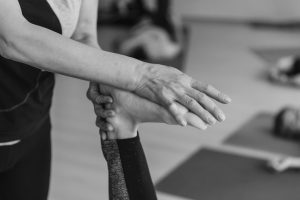Start Your Fitness Journey Today: Take the First Step!
Kickstart your fitness journey with our guide. Discover tips, motivation, and simple steps to transform your health today. Take the leap now
Benefits of Regular Exercise
Improved Physical Health
Engaging in regular exercise significantly boosts physical health by enhancing cardiovascular function, strengthening muscles, and improving flexibility. Activities such as running, swimming, and weightlifting increase heart rate, promoting better circulation and reducing the risk of heart disease.
Additionally, exercise helps maintain a healthy weight, which is crucial for preventing obesity-related conditions like diabetes and hypertension.
Mental Health Enhancement
Regular physical activity is a powerful tool for improving mental health. Exercise releases endorphins, which are natural mood lifters, helping to reduce symptoms of depression and anxiety.
It also promotes better sleep patterns and increases energy levels, contributing to overall mental well-being. Furthermore, engaging in physical activities can improve self-esteem and cognitive function, providing a sense of accomplishment and sharper mental acuity.
Increased Longevity
Consistent exercise is associated with increased life expectancy.
By maintaining a healthy body weight and reducing the risk of chronic diseases, regular physical activity can add years to your life. Studies show that even moderate exercise, such as brisk walking for 30 minutes a day, can significantly lower the risk of premature death.
Social Interaction
Participating in group fitness classes or team sports offers valuable opportunities for social interaction.
This can lead to the development of new friendships and a sense of community, which are essential for emotional health. Social engagement through exercise also provides motivation and accountability, encouraging individuals to maintain their fitness routines.
Enhanced Quality of Life
Regular exercise contributes to a higher quality of life by improving physical capabilities and mental resilience.
It enables individuals to perform daily tasks more efficiently and with less fatigue. Moreover, the discipline and routine associated with regular exercise can foster a sense of control and purpose, enhancing overall life satisfaction.
Types of Effective Workouts
Cardiovascular Workouts
Cardiovascular workouts, also known as aerobic exercises, are essential for improving heart health and increasing endurance.
These exercises include activities like running, cycling, swimming, and brisk walking. They help in burning calories, reducing body fat, and enhancing lung capacity.
Regular cardio workouts can also lower the risk of chronic diseases such as hypertension and diabetes.
Strength Training
Strength training focuses on building muscle mass and increasing strength. It involves exercises like weightlifting, resistance band workouts, and bodyweight exercises such as push-ups and squats.
Strength training not only improves muscle tone but also boosts metabolism, which aids in weight management. Additionally, it strengthens bones and joints, reducing the risk of injury.
Flexibility and Balance Exercises
Flexibility and balance exercises are crucial for maintaining a full range of motion in the joints and preventing injuries.
Yoga and Pilates are popular forms of flexibility workouts that enhance muscle elasticity and joint flexibility. Balance exercises, such as tai chi, improve stability and coordination, which are vital for overall physical performance and fall prevention, especially in older adults.
High-Intensity Interval Training (HIIT)
HIIT workouts are characterized by short bursts of intense exercise followed by brief periods of rest or low-intensity activity.
This type of training is highly effective for burning calories and improving cardiovascular fitness in a shorter time compared to traditional workouts. HIIT can be adapted to various exercises, including running, cycling, and bodyweight movements, making it a versatile option for many fitness levels.
Functional Training
Functional training focuses on exercises that mimic everyday activities, improving overall body function and movement efficiency.
This type of workout often includes compound movements that engage multiple muscle groups simultaneously, such as lunges, deadlifts, and kettlebell swings. Functional training enhances core stability, balance, and coordination, making daily tasks easier and reducing the risk of injury.
Importance of Proper Nutrition
Fueling Your Workouts
Proper nutrition is essential for fueling your workouts and ensuring optimal performance.
Consuming the right balance of carbohydrates, proteins, and fats provides the energy needed for both endurance and strength activities. Carbohydrates are particularly important as they are the body’s primary source of energy during exercise.
Ensuring you have adequate glycogen stores can help delay fatigue and maintain performance levels.
Muscle Recovery and Growth
Nutrition plays a critical role in muscle recovery and growth. After a workout, the body needs protein to repair and build muscle tissues.
Consuming a protein-rich meal or snack after exercise can enhance muscle protein synthesis, leading to greater strength and muscle gains over time. Additionally, incorporating amino acids, such as leucine, can further stimulate muscle repair and growth.
Maintaining a Healthy Weight
Proper nutrition is vital for maintaining a healthy weight, which is a crucial aspect of overall fitness.
Balancing calorie intake with energy expenditure helps prevent weight gain and promotes fat loss. Consuming nutrient-dense foods, such as fruits, vegetables, lean proteins, and whole grains, can help manage hunger and reduce the likelihood of overeating.
This balance is essential for achieving and maintaining fitness goals.
Boosting Immune Function
A well-balanced diet supports a robust immune system, which is particularly important for those engaging in regular physical activity. Intense exercise can temporarily weaken the immune system, making proper nutrition crucial in mitigating this effect.
Vitamins and minerals, such as vitamin C, vitamin D, and zinc, play a significant role in immune function and should be included in a fitness-focused diet.
Enhancing Mental Focus and Mood
Nutrition not only affects physical performance but also mental focus and mood. Consuming a balanced diet with adequate nutrients can improve cognitive function and reduce symptoms of fatigue and depression.
Omega-3 fatty acids, found in fish and flaxseeds, are known to support brain health, while complex carbohydrates can stabilize blood sugar levels, leading to improved mood and concentration.
Tips for Maintaining Fitness Goals
Set Realistic Goals
One of the most important steps in maintaining your fitness goals is to set realistic and achievable objectives. Start by assessing your current fitness level and determining what you want to achieve.
Whether it’s losing weight, building muscle, or improving endurance, ensure your goals are specific, measurable, attainable, relevant, and time-bound (SMART). This approach will help you stay focused and motivated.
Create a Consistent Schedule
Consistency is key when it comes to fitness.
Develop a workout schedule that fits into your daily routine and stick to it. Whether you prefer morning runs, lunchtime gym sessions, or evening yoga classes, having a set time for exercise will help you build a habit.
Remember, it’s better to work out regularly for shorter periods than to have sporadic, lengthy sessions.
Track Your Progress
Tracking your progress can provide motivation and insight into your fitness journey. Use a journal, app, or fitness tracker to record your workouts, monitor your progress, and celebrate your achievements.
Seeing how far you’ve come can boost your confidence and encourage you to keep pushing forward.
Stay Flexible and Adapt
Life can be unpredictable, and sometimes your fitness routine may need adjustments. Be flexible and willing to adapt your goals and schedule as needed.
If you miss a workout or experience a setback, don’t be too hard on yourself. Instead, focus on getting back on track and finding alternative ways to stay active.
Find a Workout Buddy
Having a workout buddy can significantly improve your commitment to fitness.
A partner can provide support, encouragement, and accountability. Whether it’s a friend, family member, or coworker, exercising with someone else can make workouts more enjoyable and help you stay motivated.
Prioritize Recovery and Nutrition
Maintaining fitness goals isn’t just about exercise; it’s also about taking care of your body through proper recovery and nutrition.
Ensure you’re getting enough rest, staying hydrated, and consuming a balanced diet rich in nutrients. Recovery days are crucial for preventing injuries and improving performance, so listen to your body and give it the rest it needs.
FAQ
Q1: How often should beginners train to see effective results?
A1: For beginners, it’s recommended to start with 3 to 4 training sessions per week. This frequency allows your body to adapt to new physical demands while also providing ample time for recovery, which is crucial for muscle growth and preventing injury. Each session should ideally include a mix of cardiovascular exercises, strength training, and flexibility work. As your fitness level improves, you can gradually increase the intensity and duration of your workouts.
Q2: Is muscle soreness normal for beginners, and how can it be managed?
A2: Yes, muscle soreness, often referred to as delayed onset muscle soreness (DOMS), is common among beginners as your muscles adapt to new exercises. This soreness is a normal part of the muscle-strengthening process. To manage it, ensure you are properly warming up before workouts and cooling down afterward. Incorporating stretching, hydration, and adequate rest can also help. If soreness persists or is severe, it may be beneficial to consult a fitness professional to adjust your routine.
Q3: How can advanced fitness enthusiasts overcome a training plateau?
A3: Advanced users often encounter plateaus, where progress stalls despite consistent effort. To overcome this, consider varying your workout routine by changing the intensity, duration, or type of exercise. Implementing techniques such as progressive overload, where you gradually increase the weight or resistance, can stimulate muscle growth. Additionally, incorporating cross-training or trying new fitness activities can challenge your body in different ways. Ensuring proper nutrition and recovery, including adequate sleep and active rest days, is also crucial for breaking through plateaus.
Takeaway
“Ready to kickstart your fitness journey and crush your goals? Join our vibrant fitness community today, where you’ll find the support and motivation you need to succeed! Download your FREE training plan now and embark on an exciting new workout challenge. Let’s sweat, smile, and conquer together! Take the first step towards a stronger, healthier you – let’s do this!”
References
- British Journal of Sports Medicine (2021) links regular fitness training to a 40% lower risk of early death.
- CDC (2022) reports that only 23% of U.S. adults meet recommended aerobic and muscle-strengthening guidelines.
- Les Mills delivers group fitness content to over 20,000 gyms worldwide and through online streaming.
- Fitbit, owned by Google, helps users track steps, heart rate, and sleep to support fitness goals.











Comments